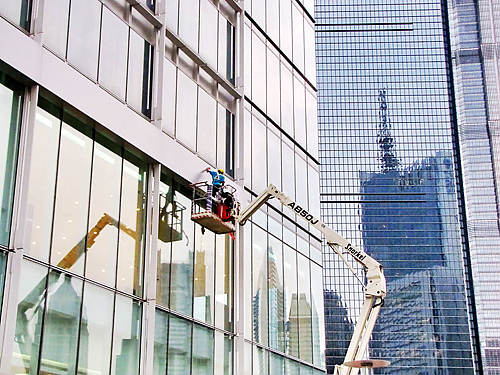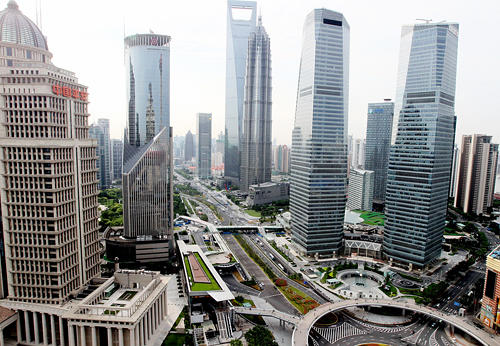|
 |
|
OUT OF WINDOW: A worker cleans glass outside of a skyscraper in Shanghai (CFP) |
On July 8, as 19-year-old Zhu Yiyi was walking past a 23-story building in Hangzhou, east China's Zhejiang Province, shards of glass falling from a shattered window on the 21st floor of the building hit her left leg.
The glass severed the arteries in her left thigh and left a 20-cm laceration on the left lower limb. The injuries left Zhu with no choice but to have her leg amputated at the knee.
Zhu's is not the only accident caused by glass curtain walls in recent months. In May, 50 vehicles were damaged by broken glass falling from the 46th floor of a skyscraper in Lujiazui Financial District in Shanghai. Also in Shanghai, on August 9, 30 panes of glass rained down upon a residential area in the city's central business district, injuring a passer-by.
On August 20, in another city of Zhejiang Province, Yiwu, the 20-meter-high glass ceiling of a garment market came crashing down, injuring several children.
"Several kids were crying, and there were blood and glass everywhere. A boy of about 10 was lying there, with flesh cut from his lower legs. I could even see the bones," said a shopkeeper in the market.
 |
|
HIGH UP: Tall buildings with glass curtain walls are common in the Lujiazui Financial District of Shanghai (CHEN FEI) |
High temperatures were blamed for the cracking of the glass in those cases. The glass used in the exterior walls of skyscrapers is usually armored glass, which contains nickel sulfide particles and other impurities. The glass is subject to sharp temperature differences as building's air-conditioned interiors are much cooler than the outside air, especially on hot summer days. This difference in temperature can cause armored glass to burst, though experts say only poor quality and badly maintained glass is prone to bursting.
"The fundamental cause of the accidents is the government's failure to establish effective safety standards for glass curtain walls," said Lu Jinlong, Assistant Engineer in Chief of the Shanghai Research Institute of Building Sciences.
The glass curtain wall was introduced into architecture in 1926 in Germany, and swept over the Western world in the 1970s. The first building with glass-clad walls in China appeared in 1985 in Shanghai.
The style soon became popular for its modern, airy look and currently an upsurge in the construction of glass curtain walls is underway across China.
Statistics from the China Architectural and Industrial Glass Association show that China constructs 70 million square meters of glass curtain walls each year, 75 percent of the world's total. Buildings in China have more than 200 million square meters of glass curtain walls, 85 percent of the world's total.
"China's first technical code for glass curtain walls was not launched until 1996. But 20 percent of Shanghai's highrises with glass curtain walls were built earlier than that. The design and the quality inspection of glass curtain walls on these buildings were mostly substandard. Many glass curtain walls have a high risk of cracking and falling and they are practically ticking time bombs. Those constructed more than 15 years ago pose the highest risk," Lu said.
Shanghai has about 3,000 buildings with glass curtain walls, the most in China. About 900 of them are more than 15 years old, according to Lu.
"The safety of glass curtain walls is directly related to the engineering design of the building, the material quality of the glass and the skill used in its installation and maintenance. Any negligence in the details might lead to an accident," said Rao Rong, a professor at Tsinghua University's School of Architecture. "The glass curtain wall was technically mature when it was introduced to China in the 1980s, but many human errors such as lack of maintenance are to blame for accidents causing injury or damage," he said.
Xiang Hua, a sales manager at the Shanghai Kesheng Curtain Wall Engineering Co., said that many buildings used low-quality glass to reduce cost, which also increased the danger.
"Based on the current technical code for glass curtain wall engineering, which was put into force in 2003, safety glass and dual-pane insulating glass are compulsory in tall buildings. However, the cost of safety glass is much lower than double-insulating glass. A square meter of safety glass costs 80 to 100 yuan ($12.50 to $15.70), but the same size of double-insulating glass at least doubles the price," Xiang said.
| 